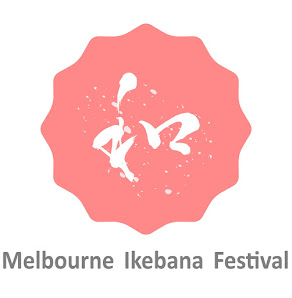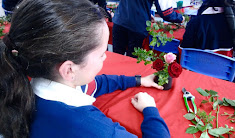1. Tainai Kuguri, Biennale of Australian Art, 13-19 October 2018. Mixed media, 150 X 150 X 400cm.
"Bring your plastic wastes (plastic bags, wrapping etc.) and attach them to Shoso’s installation, Plastic Tainai Kuguri at BOAA.
Just meditate how much we produce plastic wastes in a day (or in a week), and imagine a better way while walking through a Tainai (womb)".
While modern Western culture has been recognised by many as unsustainable, a number of indigenous cosmologies offer ecological wisdom allowing people to live in environmentally sensitive ways.
Similarly, environmental aesthetics and cosmology in Japanese traditional art such as Ikebana may offer alternative perspectives in considering strategies for sustainability.
Ikebana has been seeking a symbolic harmonious relationship between humans and nature since its inception in the 16th century.
As a contemporary Ikebana artist working in the current age of climate change and enhanced global warming, my art practice shares a lot with the increasingly significant Environmental Art movement.
While there are many definitions of Environmental Art, it shares with Ikebana one of its defining features, an ecocentric perspective in which humans are regarded as components of interconnected systems.
Through my work I hope to develop an alternative approach to Environmental Art and to investigate whether pre-modern Ikebana principles and its cosmologies could contribute to the development of Environmental Art as a vehicle of message, transforming socio-cultural values.
In my project at BOAA, I would like to focus on plastic pollution, creating an installation using plastic waste that invites viewers to participate and interact with the work.
2. Sea Snakes: Trash Vortexes, Lorne Sculpture 2018. Mixed media. 150 X 150 X 200cm (each of four pieces).
This sculpture is made of a number of ropes made of plastic bags and wire. Ropes in ancient Japanese culture are a metaphor for snakes, which are a symbol of rebirth. Such a notion about snakes are notably common to many indigenous cultures. While the environmental problem of floating plastic may seem beyond our control, my hope is that, like the snake, we can shed our old skin and find a solution to the plastic problem in our new incarnation.
A small-scale educational and participatory element was implemented in this project. In the process of making this work, some secondary students were encouraged to join, bringing plastic bags from home to recycle and engaging in a discussion about environmental problems with the artist.
3. Whale’s Stomach, Arnold Bloch Leibler Prize, Yering Station Sculpture Exhibition 2017. Mixed media. 150 X 150 X 250cm.
In June 2017, a dying whale was found in Norway with over 30 plastic bags in its stomach. That was one of several similar environmental disasters. The interior of this sculpture is created from plastic waste that is often found in oceans. This work serves as a reminder of how damaging human impact can be on the environment.
Unlike Jordan’s Midway: Message from the Gyre (2009-2013), that has a similar motif, this work may not be as direct or distressing. The form of Whale’s Stomach is nothing like the actual biological form of a whale’s stomach. It is an imaginary abstract form.













.jpg)
















